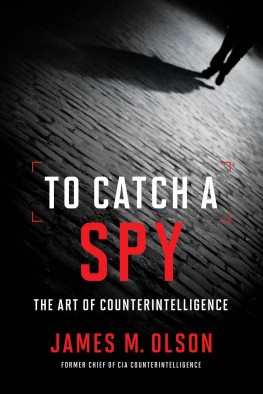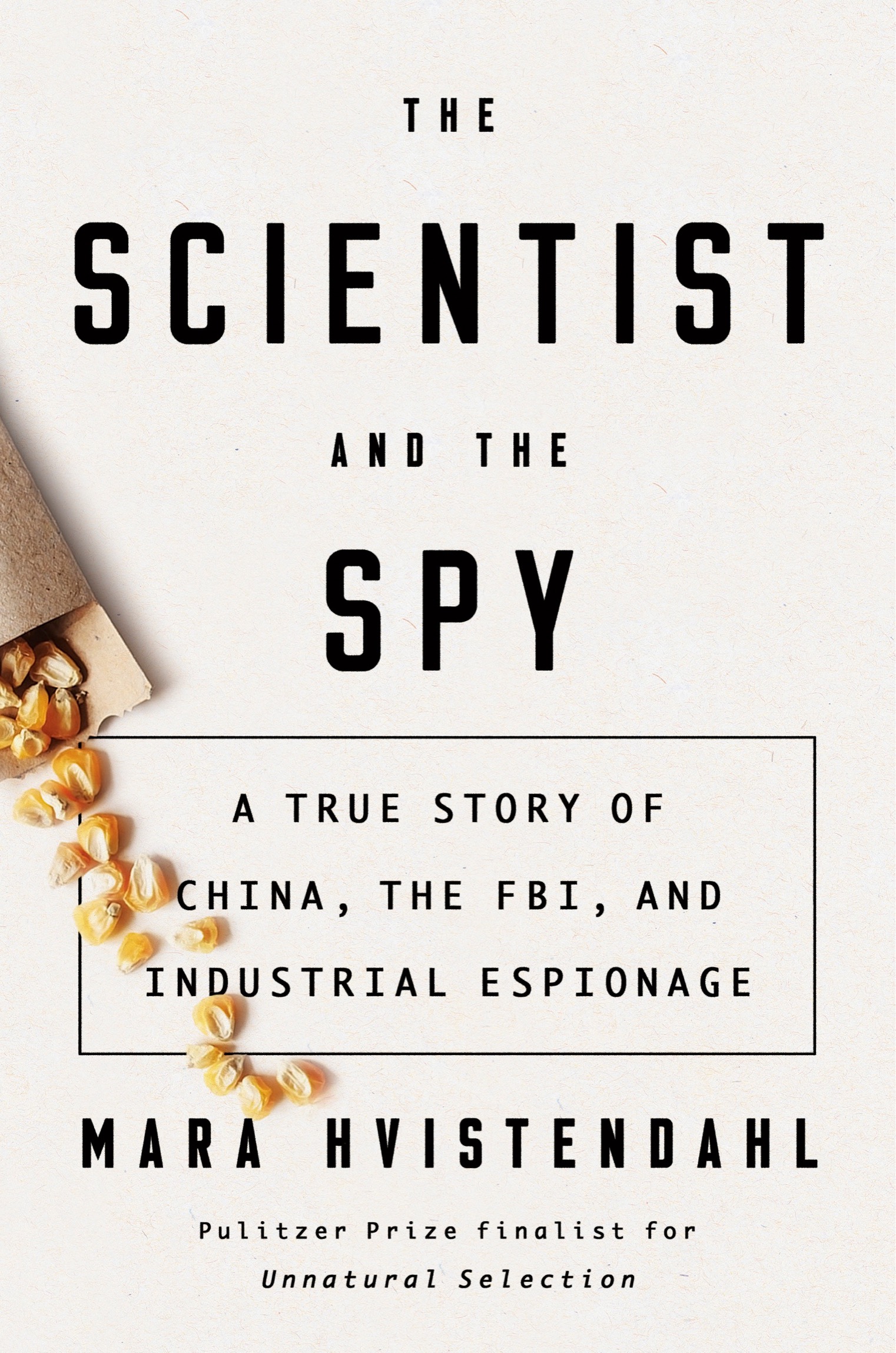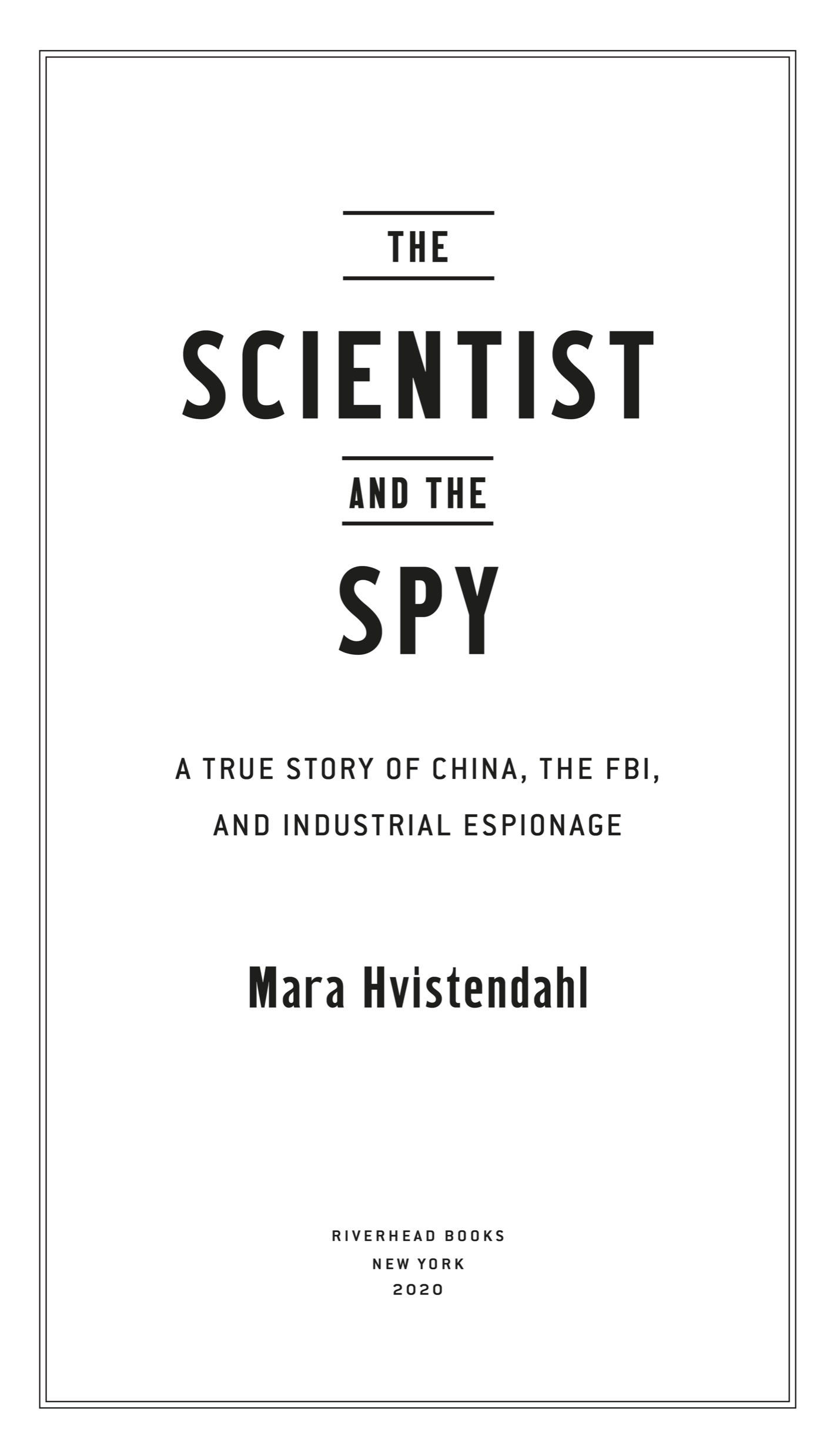ALSO BY MARA HVISTENDAHL
Unnatural Selection
And the City Swallowed Them

RIVERHEAD BOOKS
An imprint of Penguin Random House LLC
penguinrandomhouse.com

Copyright 2020 by Mara Hvistendahl
Penguin supports copyright. Copyright fuels creativity, encourages diverse voices, promotes free speech, and creates a vibrant culture. Thank you for buying an authorized edition of this book and for complying with copyright laws by not reproducing, scanning, or distributing any part of it in any form without permission. You are supporting writers and allowing Penguin to continue to publish books for every reader.
Riverhead and the R colophon are registered trademarks of Penguin Random House LLC.
Library of Congress Cataloging-in-Publication Data
Names: Hvistendahl, Mara, author.
Title: The scientist and the spy : a true story of China, the FBI, and industrial espionage / Mara Hvistendahl.
Description: 1st Edition. | New York : Riverhead, 2020. | Includes bibliographical references and index.
Identifiers: LCCN 2019037842 (print) | LCCN 2019037843 (ebook) | ISBN 9780735214286 (hardcover) | ISBN 9780735214309 (ebook)
Subjects: LCSH: United States. Federal Bureau of Investigation. | Business intelligenceUnited States. | Confidential business informationUnited States. | SpiesChina. | Agricultural industriesUnited States.
Classification: LCC HV7561 .H85 2020 (print) | LCC HV7561 (ebook) | DDC 364.16/8dc23
LC record available at https://lccn.loc.gov/2019037842
LC ebook record available at https://lccn.loc.gov/2019037843
Cover design: Grace Han
pid_prh_5.5.0_c0_r0
For Aksel
Once, when all the maize was planted,
Hiawatha, wise and thoughtful,
Spake and said to Minnehaha,
To his wife, the Laughing Water:
You shall bless to-night the cornfields,
Draw a magic circle round them,
To protect them from destruction,
Blast of mildew, blight of insect,
Wagemin, the thief of cornfields,
Paimosaid, who steals the maize-ear!
Henry Wadsworth Longfellow, Part XIII: Blessing the Cornfields, The Song of Hiawatha
CONTENTS
ONE
FALL 2011
Deputy Cass Bollman sped toward the farm, the bright morning sun glaring through the window of his patrol car. To the north was the town of Bondurant, Iowa, where newly built houses huddled together on treeless lots, churches dominated street corners, and the marquee outside Dinos Storage read AVOID ALL NEGATIVE TALK . To the south was a Tetris puzzle of cornfields. God-fearing citizens on one side, vast fields on the other, and two-lane 70th Avenue running like a ruler between the two. A few miles east of town, Bollman steered the patrol car toward the corn.
The fields were a few weeks from harvest, and the corn stretched over seven feet tall. Central Iowa had blossomed into the lingering, pleasant days that make its winter hibernation bearable. Just a few minutes earlier, Bollman had been about to take a coffee break at the Git n Go when an alert came over the radio for an incident out by 96th Street. South of here walking westbound there is an Asian male wearing a suit walking through a farm field. He was dropped off. Nature of incident: suspicious .
Eighteen years in the Polk County Sheriffs Office had taught Bollman to suspend judgment. Bondurant was a sleepy place. Its dramas centered on grass clippings left in the street and holes dug in lawns by stray farm cats. But still Bollman saw his share of action. The area he patrolled included the outskirts of Des Moines, and in addition to making traffic stops, he had worked murders and negotiated for hostages. Once he pursued a meth-fueled driver in a car chase that ended with the drivers girlfriend being flung to her death in a grisly crash. Best-case scenario, he thought, the man in the field was simply an unusually well-dressed farmworker whom a neighbor had mistaken for an intruder. Worst-case scenario, the man was burying a body.
Bollman slowed the patrol car to a stop in a grassy clearing alongside a drainage ditch. About a hundred yards into the field was a thin, neatly dressed man. In the distance, row upon row of stalks lined up like infantry. The corn between the man and the road had been cleared, allowing Bollman a direct line of sight. To his left was a cheery stucco dwelling with a broad veranda and a white picket fence encircling a pasture for grazing horses. Two other deputies arrived around the same time and were on their way out to talk to the man, so Bollman walked over to the house to chat with the farmer who owned the land.
The farmer worked this land with his brother, planting part of it for their own use and part of it under contract with Monsanto. He told Bollman that hed been out doing his morning rounds when he spotted the unfamiliar man walking on the Monsanto plot.
The corn the farmer grew for Monsanto was genetically modified inbred seed that the company used to produce commercial hybrids, which were sold at great profit to farmers for the next years planting and eventually turned into food or fuel: perhaps Doritos, perhaps ethanol. The seeds had been spliced with genes that made them resistant to certain pesticidesmost likely the Monsanto weed killer Roundupallowing the farmers who eventually purchased the commercial offspring to freely spray for weeds or insects without killing their crop. The company considered them valuable intellectual property. Monsanto kept the locations of such contract plots secret and enforced this secrecy through aggressive lawsuits. Unlike the fields where farmers grew commercial corn, which sported small guideposts that doubled as advertisements for seed lines (Pioneer 3394, DeKalb 6255), the Monsanto plot was unmarked. Even the farmer himself knew little about the seed growing on his land.
For part of the season, that was sufficient protection. Only locals who watched the Monsanto truck arrive to measure growth or spray pesticides knew that certain fields grew proprietary inbred seeds. The inbred seeds were planted in a pattern, with one or two rows of seeds designated as males for every four to six rows of females. Then, in mid-summer, as the commercial corn in the surrounding fields stood tall, Monsanto sent in machines to detassel the female rows of corn, shearing off their yellow, pollen-laden crowns in a mass spaying, leaving only the male plants intact. Soon after, the males fertilized the females, and then the company mowed down the male rows of corn. The field now looked like a buzz cut with lines shaved into it, making it easy for outsiders to identify. And the man looked like an outsider.
It was his face that the farmer had noticed first. The man had angular features, with a broad forehead framed by a receding flop of black hair. But more important was the way those features combined in the farmers mind to cancel out other details. Bondurant, population 3,860, is 97 percent white. The man was not.
The man walked with his head down, the farmer reported, as if he were scanning the ground. After considering the mans race, the farmer thought about his clotheskhakis, dress shoes, a short-sleeve collared shirt. And hed been dropped off by a gray SUV, which had then driven away.












